Branch meeting at West Berkshire Museum 10 September 2025
Speaker: Jane Burrell
The Litten Chapel, originally part of St Bartholomew Hospital, survived the Dissolution, and still stands today (as offices). No evidence has been found for its truncation, widely-believed to have been done to widen Newtown Road in the 1820s.
Sandleford Priory was founded in medieval times for the regular canons of St Augustine, but was dissolved when the monks failed to observe their vows of chastity. At the Dissolution the building passed into private family ownership, and is now the library of St Gabriel’s School.
One of Newbury’s earliest known chapels is recorded only on a map of the 1730s, which shows a chapel in the Broadway where now stands the clock tower.
The so-called “Bluecoat” school in Thatcham was founded by Lady Frances Winchcombe as a charity school.
Donnington Priory served as Donnington’s only place of worship from the mid-fourteenth century. Now it is an auction house. No archaeology has been carried out on site, but if it were, a church would almost certainly be found.
St Mary’s Leper House in Cheap Street (St Mary’s Hill) would originally have had a chapel and friars. Later, it was developed into almshouses for old maids, demolished in the 1960s for Mill Reef House.
Baptists were logged (as Anabaptists) worshipping at Thomas Merriman’s house, which still stands at the junction of the Market Place and Cheap Street. The sect then moved then to Northbrook Street, settling in a Northcroft Lane building which later became a cinema, before it was demolished.
Independents fragmented with breakaways under the labels of Presbyterianism, Congregationalism, Unitarianism and later the URC. Some groups used the Waterside Chapel, which was demolished in the 1960s for the creation of the Waterside Centre. The URC building of the 1960s (in Union Place) is currently up for sale.
Quakers came to Newbury in the 17th century, and still worship in Highfield Avenue.
Methodism worshipped in Northbrook Street, with Primitive Methodists breaking away to build their own chapel in Bartholomew Street on a site presently occupied by a block of flats.
St Mary’s Speenhamland was built in the 1830s in London Road, demolished in the 1960s.
In the 1920s/30s the Catholic church of St Joseph in London Road replaced a tiny 1864 chapel.
St John’s Church was destroyed by bombing in 1943, and rebuilt in the 1950s. The new building was the first postwar listed ecclesiastical building.
St Bartholomew’s Mission Hall in Boundary Road, built in 1890, was demolished in 1994-95.
Plymouth Brethren met in the old Northcroft Lane Baptist chapel before moving to Reading.
Christadelphians congregated in a Wharf Street chapel before moving to Thatcham.
